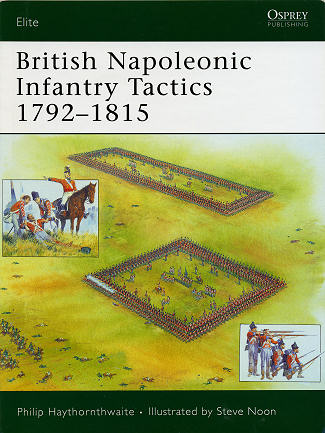 Though
decidedly dated by current standards, it was the 18 Maneuvers promulgated by Gen
Sir David Dundas Bt that meant the difference between success and failure of the
British Army during the Napoleonic wars. By setting up standards for battlefield
maneuver and requiring all British Army units to follow the exact same regimen,
commanders were able to ensure that when units arrived on the scene, they would
be able to be used in the same manner as those that had just left.
Though
decidedly dated by current standards, it was the 18 Maneuvers promulgated by Gen
Sir David Dundas Bt that meant the difference between success and failure of the
British Army during the Napoleonic wars. By setting up standards for battlefield
maneuver and requiring all British Army units to follow the exact same regimen,
commanders were able to ensure that when units arrived on the scene, they would
be able to be used in the same manner as those that had just left.
Prior to this, a regiment (the base unit for these
maneuvers) may be trained differently from the one next to it. This would mean
that orders to one may not be carried out the same as to the unit next to it. By
standardizing maneuvers, success was more likely to happen.
In this book, the author covers in great detail the origins
and use of these infantry tactics. There is more to it, of course, as there were
light infantry units attached to each of the battle lines. These units were
different from the standard infantry in that they were more highly trained in
skirmish tactics. It was their roles to make greater use of small unit
maneuvering, generally down to two man teams, to carry out their mission.
Author Haythornthwaite takes a look at how this unified
system came to be, its proponents and its critics. Then on to the organization
of the Batallion and a better look in detail at each of the maneuvers and how
they would play on the battlefield. Then there is a section on the standard
firearm of the infantry of the time, the musket and how it was used. Much like
today, a lot of shot was expended to get a hit. Something like well over 400
rounds to get one hit. The book then goes into the use of light infantry,
brigade tactics and special operations such as amphibious landings and storming
a stronghold.
Thanks to the superb illustrations of
Steve Noon, we can visualize how these formations looked and operated. It all makes for a fascinating
look at the British army of the time and one that I am sure will be well
appreciated by the wargamer and historian alike.
January 2009
For more on the complete line of Osprey books,
visit www.ospreypublishing.com
or contact them at Osprey Direct, PO Box 140, Wellingborough, Northants,
NN8 2FA, UK. In the US, it is
Osprey Direct at 44-02 23rd St, Suite 219, Long Island City, NY 11101., where you can
get a catalogue of available books.
If you would like your product reviewed fairly and quickly, please contact
me or see other details in the Note to
Contributors.
 Though
decidedly dated by current standards, it was the 18 Maneuvers promulgated by Gen
Sir David Dundas Bt that meant the difference between success and failure of the
British Army during the Napoleonic wars. By setting up standards for battlefield
maneuver and requiring all British Army units to follow the exact same regimen,
commanders were able to ensure that when units arrived on the scene, they would
be able to be used in the same manner as those that had just left.
Though
decidedly dated by current standards, it was the 18 Maneuvers promulgated by Gen
Sir David Dundas Bt that meant the difference between success and failure of the
British Army during the Napoleonic wars. By setting up standards for battlefield
maneuver and requiring all British Army units to follow the exact same regimen,
commanders were able to ensure that when units arrived on the scene, they would
be able to be used in the same manner as those that had just left.